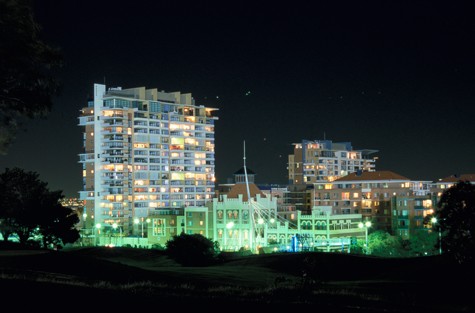
AJ+C's Moore Park Gardens in Surry Hills is a good example of high-density design, says Farelly.
Compliments are few and far between from Elizabeth Farelly when it comes to the architectural profession.
But yesterday Allen Jack + Cottier’s Moore Park Gardens picked up the accolades “sophisticated”, “chic” and “rare” from the Sydney Morning Herald journalist.
The project is Sydney’s “only” residence to come close to achieving density without sacrificing beauty, Farelly said.
However, like most of Farelly’s compliments, it comes as a backhander.
“The disgrace is that in the last decade’s huge medium-density boom, nothing else has come even close,” she said.
In this, the city had been “let down” by architects who have failed discover a green aesthetic that is desirable and capable of replacing the eaveless, sill-less, odd angles of modernism, she said.
But, the plague of averageness dominating the Sydney architecture is not a failure of “dumb” architects. It is instead the fault of a bureaucratic planning system that is afraid of stepping beyond the status quo.
Allen Jack + Cottier principals, Michael Heenan and Peter Ireland, told Architecture & Design that designing in Sydney is a battle against mediocrity.
“In order for planners to take out the lows, they have to take out the highs as well,” Michael Heenan said.
“Politicians are afraid for their position. So everything will go to a committee, each decision is the sum of numerous committees’ opinions. Each cut is another average. What you end up with is the Muzak of building.”
It is an attitude that is hampering innovation and the proof is in the pudding being created by architects offshore, Peter Ireland said.
“Architects in Sydney have a lot of talent. As soon as we go offshore and walk away from councils and planning, we’re in demand. So there’s no saying that the capacity for innovation and development isn’t there. We are being constrained.”
The design profession needs to be respected and valued by industry and by government and one way to invigorate the profession would be to review the way competitions are conducted, Ireland said.
“The design profession needs more latitude and more freedom. We’re not afraid of competition. But the expectation here is that architects should give up their creative thinking for free. If government was interested in running a true competition, with a value and reward, you’d see a lot of stimulation in the design profession.”
The expectation that architects should give up their intellectual property and time for free cheapens design, Heenan said.
“Overseas, $100,000 fee for entering a competition is normal. It really is devaluing design. Money is the thing that’s driving everything,” Heenan said.
When buildings are designed with a view to the longer term, you not only get better architecture, but stronger communities, sustainably planned cities and a progressive profession that will learn more from its successes and failures than it will from a consistent average.
“Now, we need to think deeply about every building. We have huge resources to be able to do that at a technical level - thermodynamic modeling, lighting modelling, sunshine modelling — it takes an immense amount of thought to get it right. But Sydney architects are totally capable of doing it,” Heenan said.
“Every project is an opportunity to make good architecture.”

